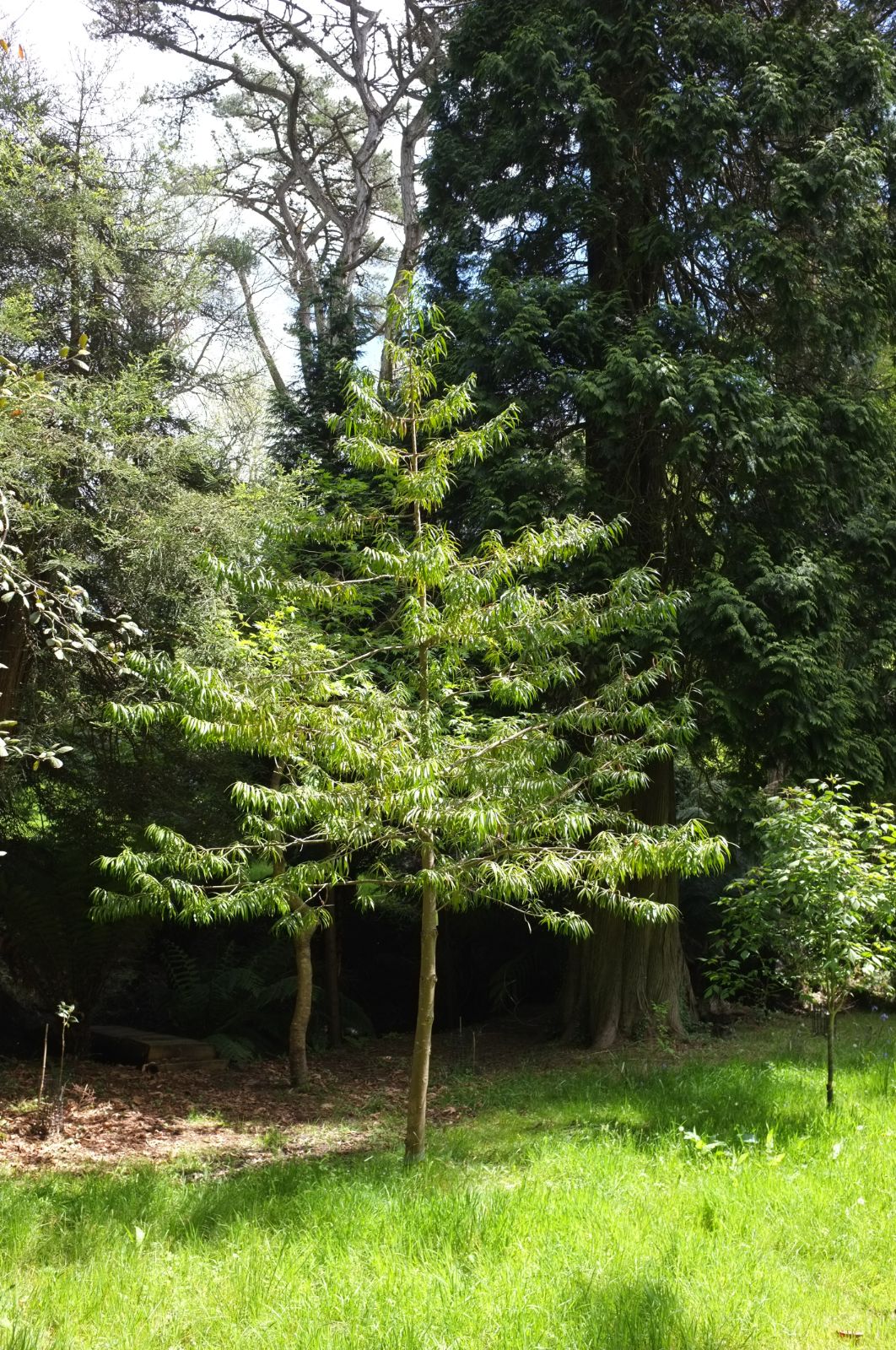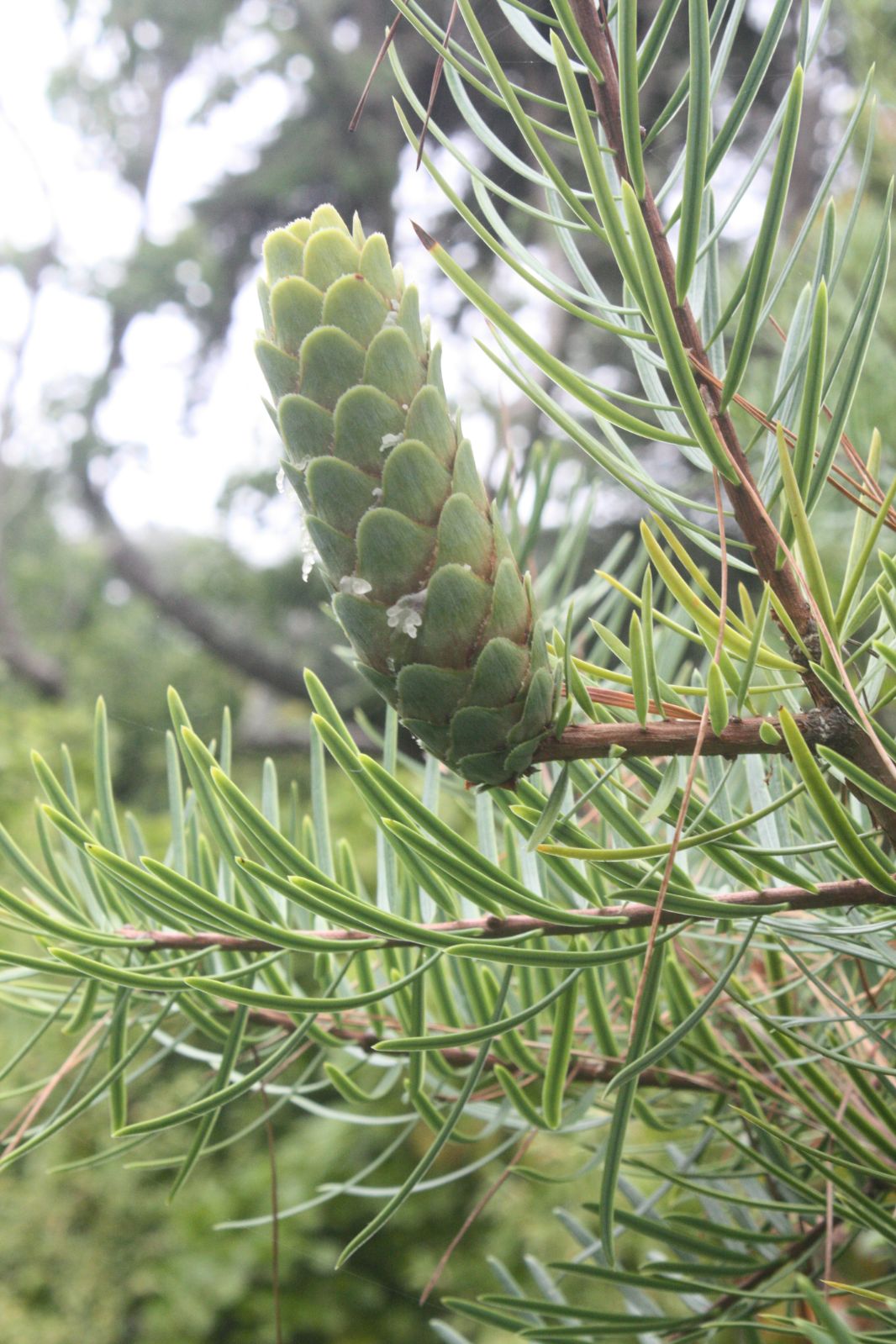Keteleeria evelyniana
Credits
Article from New Trees by John Grimshaw & Ross Bayton
Recommended citation
'Keteleeria evelyniana' from the website Trees and Shrubs Online (treesandshrubsonline.
Genus
Tree to 40 m, trunk straight and occasionally forked, 1–1.5 m dbh. Bark grey-brown, thick with corky flakes, becoming darker and scaly in older trees. Crown broad and conical, somewhat irregular. Branchlets slender, yellowish or reddish brown, becoming grey-brown with age, conspicuously grooved, leaf scars circular; young shoots pinkish green; vegetative buds not resinous. Leaves glaucous or dark green above, greenish white below, (2–)3–6.5(–8) × 0.2–0.4 cm, apex mucronate or obtuse. Male strobili lateral or terminal, pedunculate, 1–1.5 cm long, yellow with brown perular scales. Cones solitary, erect, peduncles 2–6 cm long; cone cylindrical, (4–)9–20(–25) × (3–)4–6.5(–9) cm, apex obtuse, cone green or purple, ripening to pale brown. Seed scales striated on upper surface, subcordate to oblong, 3–4 × 2.5–3 cm. Bract scales ligulate to spathulate, 1–1.5 cm long, partially exserted. Seeds dull brown, wings 2–3 × 1.2–1.5 cm. Farjon 1989, 1990, Fu et al. 1999c. Distribution CHINA: Guangxi, Sichuan, Yunnan; LAOS; VIETNAM. Habitat Mountainous areas in tropical environments, between 700 and 2000(–2700) m asl. USDA Hardiness Zone 8. Conservation status Lower Risk. Illustration Lancaster 1989, Farjon 1990, Fu et al. 1999c; NT425. Cross-reference K155.
Keteleeria evelyniana is a conspicuous tree in the Western Hills of Yunnan, and in consequence has been collected on several occasions since Roy Lancaster’s visits in the early 1980s, recorded with gusto in Travels in China (1989). Young specimens are widespread in the United States, thriving in Texas and California at least, although acting as a ‘herbaceous perennial’ for Tony Avent (pers. comm. 2006) in North Carolina. One seen at Quarryhill in 2004 was a shapely 2.5 m, reached since planting in 2000, although this has since succumbed to Armillaria, as had others earlier from the same batch (W. McNamara, pers. comms. 2004, 2007). It was also doing well in the San Francisco Botanical Garden in 2004. In the United Kingdom results are mixed. There is a good 2 m specimen of Yunnanese origin at Tregrehan, apparently growing well since accession in 1996, but a tree at Wakehurst Place (from Rushforth 371) is still only 2.5 m since 1981 and looks very unhappy, with yellowish foliage and no leader.


